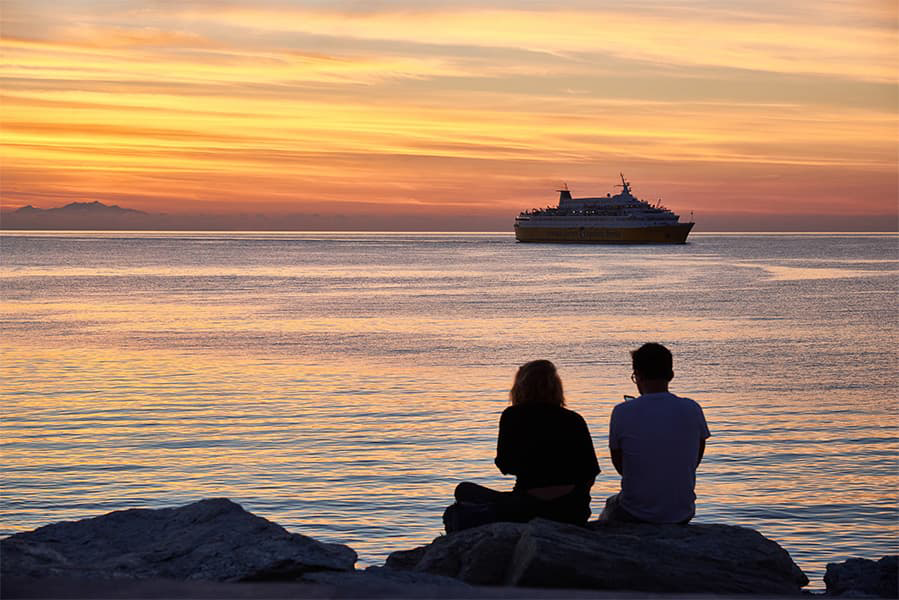Lipsi – Astypalea
Ferries to Dodecanese Islands
Lipsi – Astypalea
Ferries to Dodecanese Islands

There is usually one weekly sailing from Lipsi to Astypalea. Dodekanisos Seaways provides the ferry from Lipsi to Astypalea. Lipsi Astypalea ferries cost between $152 and $195, depending on ticket details. Prices exclude any service fees. Ferry timetables change seasonally, use our Deal Finder to get tickets, pricing, schedules and availability.
Lipsi Astypalea ferries depart at around 10:05.
Ferries from Lipsi to Astypalea sail in around 3 hours 45 minutes. Ferry duration can vary by ferry provider and can be impacted by weather conditions.
There is 1 weekly sailing from Lipsi to Astypalea provided by Dodekanisos Seaways.
The price of a ferry from Lipsi to Astypalea typically range between $150* and $193*. On average the Lipsi Astypalea ferry is $158*. The cheapest Lipsi Astypalea ferry prices start from $150*. The average price for a foot passenger is $158*.
Pricing will vary depending on number of passengers, vehicle type, route and sailing times. Pricing is taken from searches over last 30 days and exclusive of service fees, last updated April 25.
The distance between Lipsi to Astypalea is approximately 54 miles (87km) or 47 nautical miles.
Yes, Lipsi Astypalea ferries allow cars onboard with Dodekanisos Seaways between Lipsi and Astypalea. To view car ferry tickets and prices between Lipsi and Astypalea use our Deal Finder.
Dodekanisos Seaways allow foot passengers on Lipsi Astypalea ferries.
Currently, are not permitted to board ferries from Lipsi to Astypalea.
More routes than anyone else.

Compare fares, times & routes in one place.
Change plans easily with flexi tickets.

Book e-tickets & manage trips in-app.
Live ship tracking & real-time updates.

Top-rated customer support when you need it.
The Greek island of Lipsi, also sometimes called Leipsoi, is part of the Dodecanese group of islands. It is located close to the island of Patmos and the island of Leros, and lies to the south of the island of Samos and to the north of the island of Leros. The island can trace its history back to prehistoric times, however, the more modern settlements of the island were founded by a Cretan called Ilias in 1669. The island has a large area that extends to around 16 sq. km, with a coastline of 35 km and around 700 inhabitants, and was officially united with Greece in 1948.
There are a number of things to see and do on the island including the lovely church of Aghios Ioannis, Theologos which is located next to the square of the Town Hall and the Museum. Located within the church there is an icon of Panaghia the Mavri (the Black Madonna) which dates back to 1500. Also on the island is the Ecclesiastical Folklore Museum which contains some ecclesiastical relics and a small archaeological collection. Situated around 1.5 km from Lipsi Town is the Panaghia of Horos which is the only icon in Greece where the Virgin Mary is depicted holding a crucified Jesus in her arms, instead of the infant Jesus which is usually depicted. Both the monastery and the icon date back to around 1600.
Lipsi is well serviced with ferries passing between Patmos and Leros and on the main route for ferries from Piraeus.
The Greek island of Astypalea lies in the eastern Aegean Sea and is one of the 12 islands that make up the Dodecanese group of islands. The island, which sits at the point where the Dodecanese meet the Cyclades islands, has a long history and is characterised by typically Greek whitewashed villages and lovely beaches. Astypalaia is also the westernmost island of the Dodecanese and is naturally separated into Mesa Nisi (the inner island, western part) and Exo Nisi (the outer island, eastern part) by a thin strip of land less than 100 m wide.
The island's capital, and home to its port, is Chora and is regarded as one of the most picturesque towns in the Aegean. The town sits atop a rock that protrudes into the sea, forming two bays. Towering above Chora is a castle with the white domes of Evangelistria and Agios Georgios churches visible above its walls. Around the castle lie Chora’s houses with whitewashed walls, blue doors and windows, and wooden balconies.
The island is connected to the port of Piraeus and also to the other islands in the Dodecanese, the Cycladic islands and to Crete.